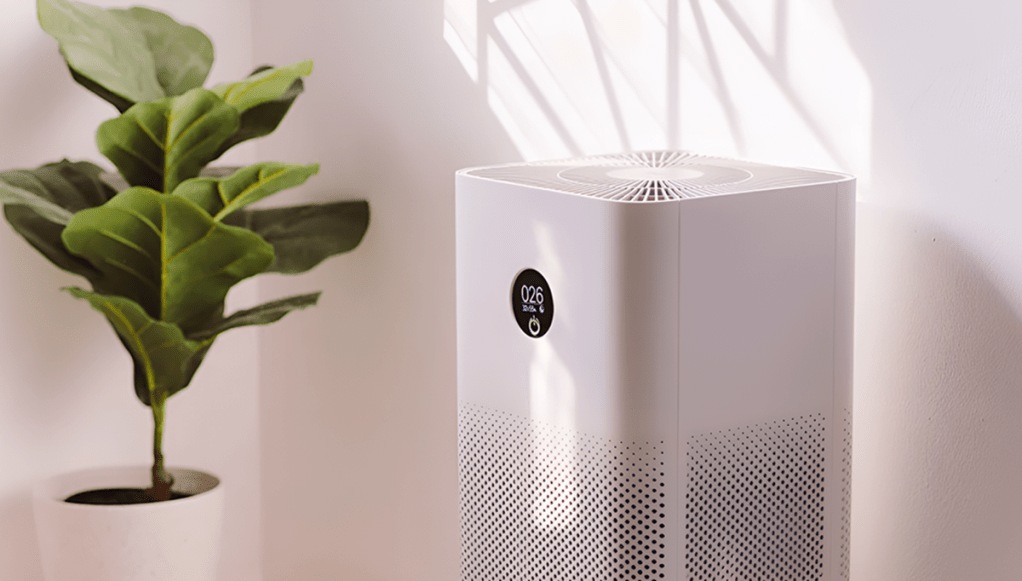– By R Suresh and Dheeraj Mehra
In just a few weeks from now, as the first waves of pollution from Punjab’s rice fields hit the capital, advertisements of air purifiers will flood the media. Do these appliance help?
The effects of air pollution on public health are well-known. Apart from outdoor air pollution, indoor air quality has also become a significant concern. Many people spend a good deal of time indoors, where air pollutants such as dust, mold, volatile organic compounds (VOCs), and particulate matter (PM2.5 and PM10) can accumulate and adversely affect health. As pollution levels surge during the winter, people seek solutions to protect themselves from hazardous air.
Air purifiers use various filtration technologies to remove pollutants from the air. The most commonly used filtration system is the High-Efficiency Particulate Air (HEPA) filter, which captures up to 99.97 percent of particles as small as 0.3 microns, including dust, pollen, mold spores, and certain bacteria and viruses. Other technologies, such as activated carbon filters, target gaseous pollutants like VOCs. Some others employ UV light to neutralize airborne pathogens. Yet other systems, like ionizers, release negative ions to attract and weigh down pollutants, causing them to fall to the floor.
The utility of air purifiers is apparent in households since cooking fumes, tobacco smoke, pet dander, or household cleaning products pollute the air. Persons with respiratory conditions, such as asthma or allergies, benefit significantly from the cleaner air. Nevertheless, their actual performance can vary widely from the advertised figures. Manufacturers typically test air purifiers under controlled conditions, where variables such as room size, ventilation, and pollution sources are optimized to showcase the highest possible efficiency. In real-life settings, however, the complexities of actual environments can impact purifier performance. Tests in actual situations have found that air purifiers typically achieve a maximum PM removal efficiency of 70 percent to 75 percent, well below the claimed efficiencies. This fact does not imply that air purifiers are ineffective, but rather that the typical home differs from laboratory conditions. Ongoing pollution sources, room ventilation, and even the placement of the purifier significantly impact performance. Even at 70 percent efficiency, the reduction of harmful particles can significantly improve indoor air quality.
For air purifiers to be effective indoors, factors like room size, placement, and maintenance are crucial. Using a purifier in a room larger than its design capacity can drastically reduce its effectiveness. Additionally, proper placement is key: air purifiers should be positioned in central areas with good airflow, away from corners or behind furniture that could obstruct circulation. Regular maintenance, such as cleaning or replacing filters, is essential. Clogged filters reduce efficiency and sometimes even reintroduce pollutants into the air. Users must be diligent about maintenance.
Advancements in air purifier technology have further enhanced their effectiveness. Recent innovations include real-time air quality sensors and automated operational adjustments that optimize air filtration. Some devices now incorporate hybrid filtration systems, combining HEPA filters with ultraviolet-C (UV-C) light or graphene-based materials to improve particle removal and pathogen inactivation. These new developments ensure a more comprehensive approach to indoor air quality management.
As air purifiers age, proper disposal of used filters is critical to minimize environmental harm. Some filters contain hazardous substances such as lead or mercury and require special handling. Following manufacturer guidelines and local regulations for disposal can help prevent the release of pollutants back into the environment. Filters should be sealed in plastic bags and disposed of appropriately, with hazardous components processed at specialized facilities.
While air purifiers offer tangible benefits, they are not a standalone solution to indoor air quality issues. A holistic approach is necessary, including reducing sources of pollution: avoiding smoking indoors, using low-VOC paints and cleaning products, and ensuring adequate ventilation. Additionally, in highly polluted urban environments, keeping windows and doors closed during peak pollution hours is essential.
Air purifiers are designed for indoor spaces and cannot directly address outdoor air pollution. Ambient pollution, driven by vehicle emissions, industrial activities, construction, biomass burning, and natural events such as wildfires, affect vast geographic areas and accordingly requires large-scale interventions. Common outdoor pollutants include particulate matter (PM2.5 and PM10), nitrogen oxides (NOx), sulfur dioxide (SO2), and ground-level ozone. Addressing outdoor air quality requires systemic solutions such as reducing emissions from vehicles, industry, etc., implementing cleaner technologies, and enforcing strict regulatory policies.
Governments must enforce stricter emissions standards, promote cleaner energy sources, and invest in sustainable transportation to reduce pollution levels. Without such large-scale policy interventions, efforts to address air quality will remain incomplete. Improving both indoor and outdoor air quality requires a multifaceted strategy that integrates individual actions with public policy measures. The broader challenge of air pollution requires a collective effort, combining short-term solutions like air purifiers with long-term actions such as emission control and public education.
In conclusion, air purifiers, when used correctly, play an important role in improving indoor air quality. However, they are just one part of a broader strategy needed to address air pollution both indoors and outdoors.
(R Suresh is Senior Fellow and Dheeraj Mehra is Research Associate at The Energy and Resources Institute (TERI).)
(Disclaimer: Views expressed are personal and do not reflect the official position or policy of Financial Express Online. Reproducing this content without permission is prohibited.)

